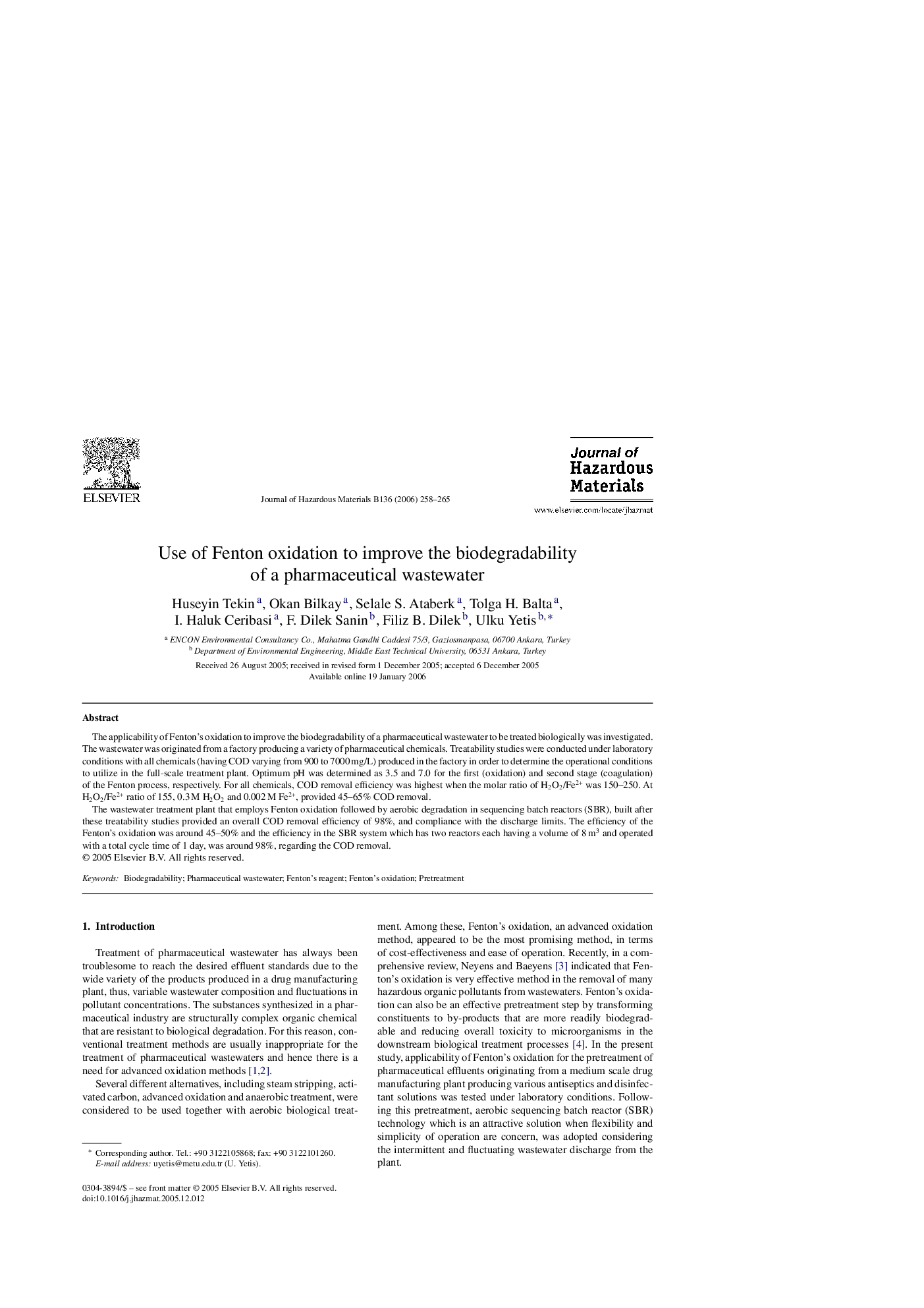| Article ID | Journal | Published Year | Pages | File Type |
|---|---|---|---|---|
| 585532 | Journal of Hazardous Materials | 2006 | 8 Pages |
The applicability of Fenton's oxidation to improve the biodegradability of a pharmaceutical wastewater to be treated biologically was investigated. The wastewater was originated from a factory producing a variety of pharmaceutical chemicals. Treatability studies were conducted under laboratory conditions with all chemicals (having COD varying from 900 to 7000 mg/L) produced in the factory in order to determine the operational conditions to utilize in the full-scale treatment plant. Optimum pH was determined as 3.5 and 7.0 for the first (oxidation) and second stage (coagulation) of the Fenton process, respectively. For all chemicals, COD removal efficiency was highest when the molar ratio of H2O2/Fe2+ was 150–250. At H2O2/Fe2+ ratio of 155, 0.3 M H2O2 and 0.002 M Fe2+, provided 45–65% COD removal.The wastewater treatment plant that employs Fenton oxidation followed by aerobic degradation in sequencing batch reactors (SBR), built after these treatability studies provided an overall COD removal efficiency of 98%, and compliance with the discharge limits. The efficiency of the Fenton's oxidation was around 45–50% and the efficiency in the SBR system which has two reactors each having a volume of 8 m3 and operated with a total cycle time of 1 day, was around 98%, regarding the COD removal.
